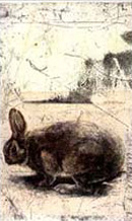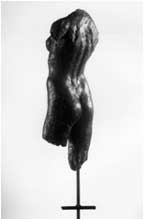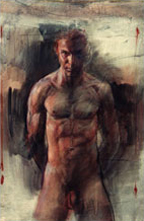COLLECTING WORKS OF ART
|
UNIQUE? ORIGINAL? MULTIPLE-ORIGINAL? REPRODUCTIONS?
WHAT IS GOING ON HERE?
Collectors of art are often bewildered and frequently mislead by the varying types of art there are, or by the complexities of process. These confusions may relate to the huge variety of form in this day and age, as compared to that of over a century ago when in effect the academy determined what was and what was not good art. Of course that in turn leads to a state of such multiplicity and the reluctance of the “academy” (today comprised of academics, critics and journals) to make qualifying judgments, that the collector has so much to choose from that he or she may back away completely. The formal aspects (what it looks like and how was it made, what does it mean, is it good?) are worth studying because they are a help for those who are not initiated in the business of viewing a work critically.
Here, I am cutting through the formal aspects of a work, to its identity with terms like “multiple original” and “unique”. It is especially important to clearly define these terms for me because the intrinsic value of a work is being addressed. In the pages that follow, a variety of works will be viewed. They include both of the above. They do not include “reproductions.” And that is the crucial distinction I wish to make.
A reproduction is basically a photograph of a work of art which is then reproduced with an off set mechanical process, much as books and magazines are printed. Even if in an attempt to match the reproduction to the “original” extends to many runs so that instead of the standard four color process, we have all kinds of subtle nuances, the fact remains, there is a unique original, the painting, and then a reproduction of it, the print. These “limited edition prints” proliferate especially in tourist environments and even though signed and numbered, the fact remains, they are not considered original but reproductions with no intrinsic value.
In the multiple originals included here, the only “original” is the copper plate, or the Mylar drawings, which I use to make my prints. I create each aspect of the print individually without the reproduction of an existing unique work. This does not mean I will not use a work as a departure point, which I did with the lithograph Eclipse, but that is simply a reference, an inspiration for what becomes another work.
The essentials of this principle also apply to sculpture, where the “original” is made by me in the studio in clay, wax etc. but the casting is done from a mold and executed in a foundry. This is an expensive and complicated procedure that allows for multiples usually around 10 to 25 in an edition in my case, keeping the cost for individual castings reasonable.
People generally seem pretty certain as to their likes and dislikes in art. Of course that is usually instinctive which is fine. But when the instinct is informed, a person is less likely to buy a work, which will later prove a disappointment or to have been over priced. The kind of art one likes and the specific work one might like, are deeply generated and very personal. Indeed, I like to compare it to falling in love. Because one person does not fall in love with another, it does not mean the other person is lesser, simply that a very crucial and mysterious ingredient was not part of that experience. Thus, even though it means a lot to me to have a large number of people respect my work, I am never offended if the “type” of work that I do, does not inspire passion. So I invite you in to this viewing respecting your place and individuality and hope that you enjoy what you see and even better, that one or more works would seize your heart for extended perusal. Thanks for your patience in reading this and viewing my work.
|
 |
|
|
|
|
 |
 |
 |
 |
 |
TREVOR SOUTHEY STUDIOS | 415 407 8607 | SOUTHEYART@TREVORSOUTHEY.COM
|
|